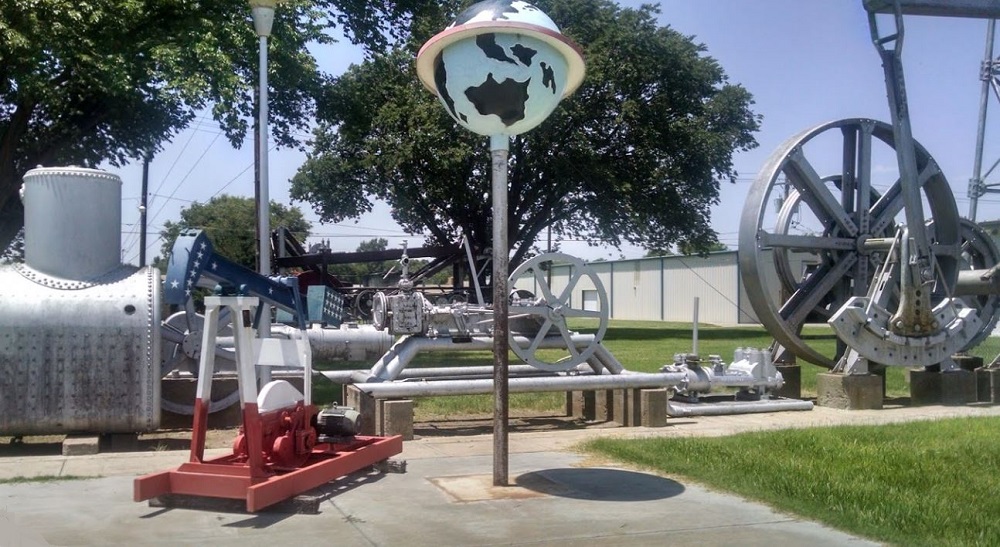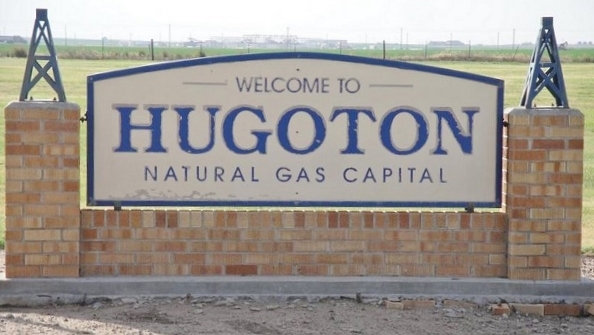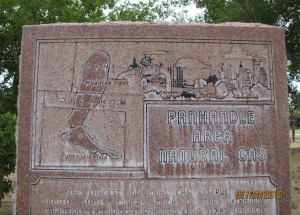Kansas museum preserves history of 1920s natural gas field and world’s greatest source of helium.
A small museum in southwestern Kansas preserves the history of one of the largest natural gas fields in the world. The Stevens County Gas & Historical Museum in Hugoton opened in 1961 near a gas well drilled in 1945 and still producing.
Hugoton’s petroleum museum, founded by a group of dedicated volunteers led by Gladys Renfro, serves as a Kansas energy education center. Its exhibits are “a memento of the Hugoton gas field and the progressive development of Stevens County.”

Exhibits at the Stevens County Gas & Historical Museum in Hugoton, Kansas, include late 19th-century production equipment. Settlers named their town Hugo in honor of French writer Victor Hugo.
The Stevens County Gas & Historical Museum also includes early 1900 furnishings, farming tools, printing and other displays from a farming community proclaiming itself as America’s “Natural Gas Capital.” Hugoton hosts a Gas Capitol Triathlon and the Gas Capitol Car Show & Rod Run every August.
Natural Gas Giant
The Hugoton natural gas field is the largest in North America. Covering more than 14 counties in western Kansas alone, it extends 8,500 square miles into the Oklahoma and Texas panhandles. In 2003, about 11,000 wells produced natural gas and oil in the Kansas portion of the Hugoton area, according to the Kansas Geological Survey (KGS). Thousands of miles of pipeline have carried Hugoton natural gas nationwide.
The Hugoton field produced 358 billion cubic feet of natural gas in 2007, making it the fifth largest U.S. source at the time. The economic value of production from southwest Kansas exceeded 50 percent of all the petroleum produced in the state.
However, Hugoton field production by 2022 dropped to 68.5 billion cubic feet due to reduced reservoir pressures, according to KGS.
Early Gas Wells
Although natural gas had been discovered as early as 1922 near Liberal, Kansas, that exploratory well did not produce oil — so it was considered of little commercial value and remained unused for several years.
“In 1927, gas was discovered at the Independent Oil and Gas Company’s Crawford No. 1, about 2,600 feet below the surface southwest of Hugoton,” reported KGS. In 1929, Argus Pipe Line Company started construction of a pipeline to furnish gas to Dodge City.
Beginning in the 1930s, Phillips Petroleum Company produced Hugoton natural gas from 3,000 feet deep in Texas County, Oklahoma (also see ConocoPhillips Petroleum Museums).

Natural gas had been discovered as early as 1922, but the potential of the Hugoton-Panhandle field was not revealed until a 1927 well southwest of Hugoton.
“This field with subsequent deeper discoveries of oil and gas has provided landowners with royalty revenue and cheap fuel,” reports a historical marker in a Guymon, Oklahoma, park. “There are nearly 8,000 producing oil or gas wells in Texas County today,” the historic marker notes.
“For 75 years, the county has been one of the largest sources of revenue for the state of Oklahoma through taxes on oil and gas production.”
World’s Helium Supplier
Hugoton natural gas fields also have become a leading source of helium, thanks to a University of Kansas professor who in 1905 discovered helium could be extracted from natural gas (learn more in Kansas “Wind Gas” Well). The Hugoton-Panhandle gas continues to be the largest source of helium worldwide.

In southwestern Kansas, the Stevens County Gas & Historical Museum in Hugoton is above a giant natural gas-producing area (in red) that extends 8,500 square miles into the Oklahoma and Texas panhandles.
The natural gas museum at 905 S. Adams Street in Hugoton, includes early oil patch equipment, restored buildings — including a historic Santa Fe Hugoton Train Depot — an 1887 school house and home, a grocery store, and a barbershop. A natural gas well drilled in 1945 is still producing at the museum.
A 2004 Hugoton Asset Management Project brought together KGS and eight industry partners in the Hugoton field — to build a “knowledge and technical base required for intelligent stewardship, identification of new opportunities, and continued improvement in recovery strategies.”

“Hugoton-Panhandle gas provides the world’s largest source of helium from which the U.S. Government has drawn a 40-year supply stockpile and spacecraft and other industries obtain current needs,” notes a monument in Guymon, Oklahoma.
Improved production technologies have increased production of unconventional gasses — shale gas and coalbed methane — and overtaken the Hugoton field’s once-dominant role. Prolific discoveries were made at Fayetteville, Arkansas, in 2004 and Haynesville, Louisiana, in 2008.
Learn about another giant natural gas formation, the Trenton field of the 1880s, in Indiana Natural Gas Boom.
_______________________
Recommended Reading: The Extraction State, A History of Natural Gas in America (2021); The Natural Gas Revolution: At the Pivot of the World’s Energy Future (2013). Your Amazon purchase benefits the American Oil & Gas Historical Society. As an Amazon Associate, AOGHS earns a commission from qualifying purchases.
_______________________
The American Oil & Gas Historical Society (AOGHS) preserves U.S. petroleum history. Please become an AOGHS annual supporter and help maintain this energy education website and expand historical research. For more information, contact bawells@aoghs.org. Copyright © 2025 Bruce A. Wells. All rights reserved.
Citation Information – Article Title: “Natural Gas Museum” Authors: B.A. Wells and K.L. Wells. Website Name: American Oil & Gas Historical Society. URL: https://aoghs.org/energy-education-resources/natural-gas-museum. Last Updated: May 9, 2025. Original Published Date: May 12, 2013.



